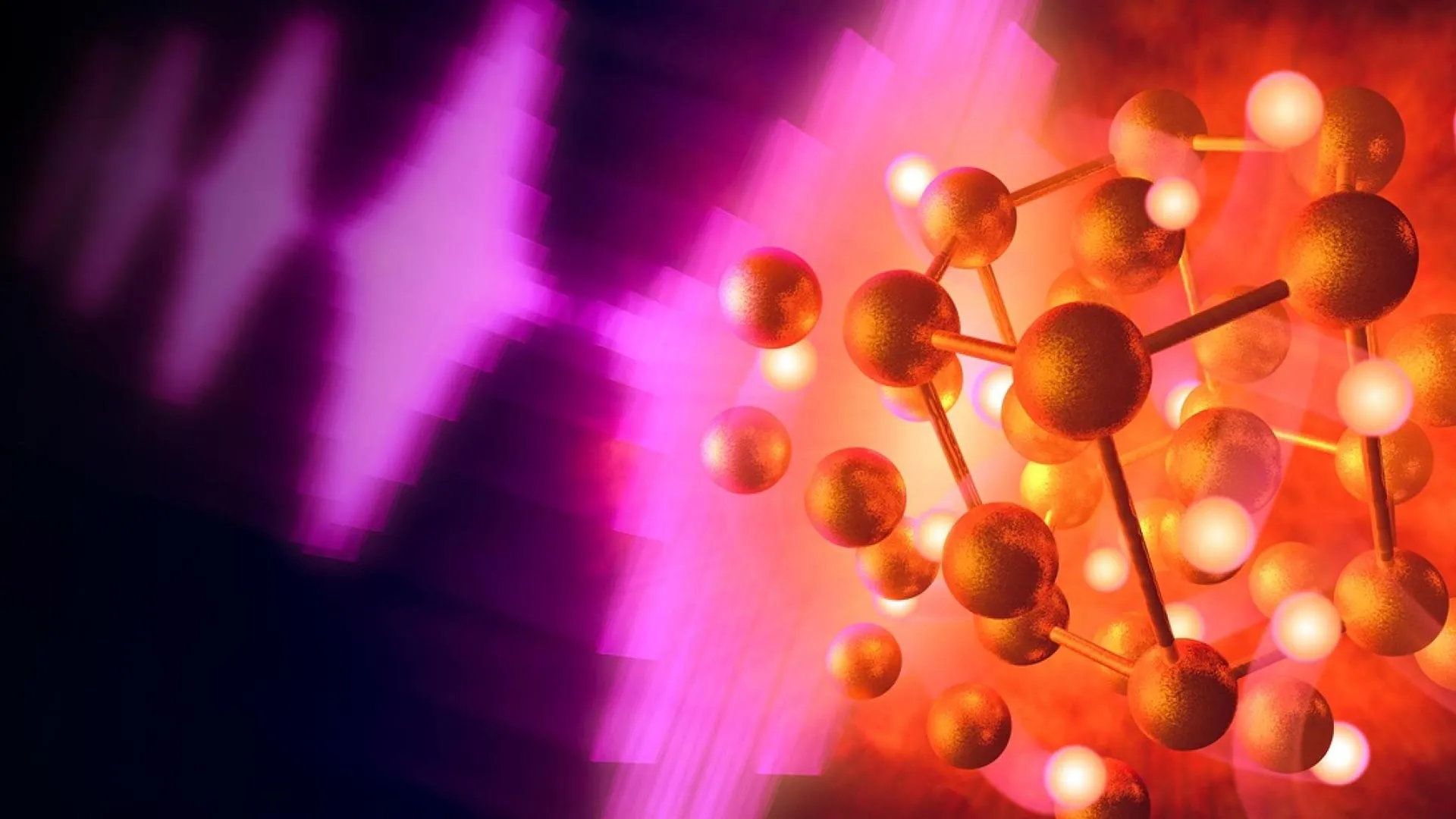Accidental lab discovery reveals gold’s secret chemistry
The team unexpectedly formed gold hydride in an experiment that could pave the way for studying materials under extreme conditions like those found inside certain planets and stars undergoing nuclear fusion.
- Date:
- August 11, 2025
- Source:
- SLAC National Accelerator Laboratory
- Summary:
- Scientists at SLAC unexpectedly created gold hydride, a compound of gold and hydrogen, while studying diamond formation under extreme pressure and heat. This discovery challenges gold’s reputation as a chemically unreactive metal and opens doors to studying dense hydrogen, which could help us understand planetary interiors and fusion processes. The results also suggest that extreme conditions can produce exotic, previously unknown compounds, offering exciting opportunities for future high-pressure chemistry research.
- Share:

Serendipitously and for the first time, an international research team led by scientists at the U.S. Department of Energy's SLAC National Accelerator Laboratory formed solid binary gold hydride, a compound made exclusively of gold and hydrogen atoms.
The researchers were studying how long it takes hydrocarbons, compounds made of carbon and hydrogen, to form diamonds under extremely high pressure and heat. In their experiments at the European XFEL (X-ray Free-Electron Laser) in Germany, the team studied the effect of those extreme conditions in hydrocarbon samples with an embedded gold foil, which was meant to absorb the X-rays and heat the weakly absorbing hydrocarbons. To their surprise, they not only saw the formation of diamonds, but also discovered the formation of gold hydride.
"It was unexpected because gold is typically chemically very boring and unreactive -- that's why we use it as an X-ray absorber in these experiments," said Mungo Frost, staff scientist at SLAC who led the study. "These results suggest there's potentially a lot of new chemistry to be discovered at extreme conditions where the effects of temperature and pressure start competing with conventional chemistry, and you can form these exotic compounds."
The results, published in Angewandte Chemie International Edition, provide a glimpse of how the rules of chemistry change under extreme conditions like those found inside certain planets or hydrogen-fusing stars.
Studying dense hydrogen
In their experiment, the researchers first squeezed their hydrocarbon samples to pressures greater than those within Earth's mantle using a diamond anvil cell. Then, they heated the samples to over 3,500 degrees Fahrenheit by hitting them repeatedly with X-ray pulses from the European XFEL. The team recorded and analyzed how the X-rays scattered off the samples, which allowed them to resolve the structural transformations within.
As expected, the recorded scattering patterns showed that the carbon atoms had formed a diamond structure. But the team also saw unexpected signals that were due to hydrogen atoms reacting with the gold foil to form gold hydride.
Under the extreme conditions created in the study, the researchers found hydrogen to be in a dense, "superionic" state, where the hydrogen atoms flowed freely through the gold's rigid atomic lattice, increasing the conductivity of the gold hydride.
Hydrogen, which is the lightest element of the periodic table, is tricky to study with X-rays because it scatters X-rays only weakly. Here, however, the superionic hydrogen interacted with the much heavier gold atoms, and the team was able to observe hydrogen's impact on how the gold lattice scattered X-rays. "We can use the gold lattice as a witness for what the hydrogen is doing," Mungo said.
The gold hydride offers a way to study dense atomic hydrogen under conditions that might also apply to other situations that are experimentally not directly accessible. For example, dense hydrogen makes up the interiors of certain planets, so studying it in the lab could teach us more about those foreign worlds. It could also provide new insights into nuclear fusion processes inside stars like our sun and help develop technology to harness fusion energy here on Earth.
Exploring new chemistry
In addition to paving the way for studies of dense hydrogen, the research also offers an avenue for exploring new chemistry. Gold, which is commonly regarded as an unreactive metal, was found to form a stable hydride at extremely high pressure and temperature. In fact, it appears to be only stable at those extreme conditions as when it cools down, the gold and hydrogen separate. The simulations also showed that more hydrogen could fit in the gold lattice at higher pressure.
"These results suggest there's potentially a lot of new chemistry to be discovered at extreme conditions where the effects of temperature and pressure start competing with conventional chemistry, and you can form these exotic compounds." Mungo Frost SLAC staff scientist
The simulation framework could also be extended beyond gold hydride. "It's important that we can experimentally produce and model these states under these extreme conditions," said Siegfried Glenzer, High Energy Density Division director and professor for photon science at SLAC and the study's principal investigator. "These simulation tools could be applied to model other exotic material properties in extreme conditions."
The team also included researchers from Rostock University, DESY, European XFEL, Helmholtz-Zentrum Dresden-Rossendorf, Frankfurt University and Bayreuth University, all in Germany; the University of Edinburgh, UK; the Carnegie Institution for Science, Stanford University and the Stanford Institute for Materials and Energy Sciences (SIMES). Parts of this work were supported by the DOE Office of Science.
Story Source:
Materials provided by SLAC National Accelerator Laboratory. Original written by Chris Patrick. Note: Content may be edited for style and length.
Journal Reference:
- Mungo Frost, Kilian Abraham, Alexander F. Goncharov, R. Stewart McWilliams, Rachel J. Husband, Michal Andrzejewski, Karen Appel, Carsten Baehtz, Armin Bergermann, Danielle Brown, Elena Bykova, Anna Celeste, Eric Edmund, Nicholas J. Hartley, Konstantin Glazyrin, Heinz Graafsma, Nicolas Jaisle, Zuzana Konôpková, Torsten Laurus, Yu Lin, Bernhard Massani, Maximilian Schörner, Maximilian Schulze, Cornelius Strohm, Minxue Tang, Zena Younes, Gerd Steinle‐Neumann, Ronald Redmer, Siegfried H. Glenzer. Synthesis of Gold Hydride at High Pressure and High Temperature. Angewandte Chemie International Edition, 2025; DOI: 10.1002/anie.202505811
Cite This Page: